The predecessor of Guangdong Medical University is the Zhanjiang Branch of Sun Yat-sen Medical College. It was founded in 1958. In 1964, it was upgraded to a five-year medical undergraduate college and renamed Zhanjiang Medical College. In 1992, it was renamed Guangdong Medical College. In 2016, it was renamed Guangdong Medical College. University. In 1960, it was rated as an advanced unit in the national cultural and educational front. In 1978, two scientific research achievements were awarded by the National Science Conference. In 1986, it was approved as a master's degree authorization unit and listed as a key construction university in Guangdong Province. In 1991, it won the first place in the evaluation of school running level in Guangdong Province. In 2005, it was awarded "Excellent" in the evaluation of the undergraduate teaching level of the Ministry of Education. In 2013, it was approved as a doctorate-granting unit. In May 2015, the school entered the top 1% of the ESI global rankings. In 2017, it passed the undergraduate teaching level evaluation of the Ministry of Education. After review and evaluation, it entered the Center for World University Rankings of Higher Education Research Institutions (CWUR) and USNews World University Rankings in 2019. In 2021, it entered the ranks of key discipline construction universities in the Guangdong Province High-level University Construction Plan. In 2023, it was approved as a postdoctoral fellow in clinical medicine. Research mobile station. The school has a total area of nearly 2,900 acres and consists of two parts: Zhanjiang Campus and Dongguan Campus. Zhanjiang Campus is located in Zhanjiang City, a coastal open city rich in subtropical style; Dongguan Campus was founded in 2002 and is located in Songshan, Dongguan City, the geographical center of the Guangdong-Hong Kong-Macao Greater Bay Area. Lake Science City. The school currently has 27,594 full-time students of various types, including 24,473 undergraduate students, 25 undergraduate preparatory students, and 3,096 postgraduate students. It has the School of Marxism, the Graduate School, the School of Basic Medical Sciences, the First Clinical School of Medicine, the Second Clinical School of Medicine (School of General Practitioners), the School of Medical Technology, the School of Nursing, the School of Pharmacy, the School of Public Health, and the School of Gynecology and Pediatrics. There are 18 colleges (departments) including the School of Marine and Tropical Medicine, School of Biomedical Engineering, School of Humanities and Management, School of Foreign Languages, Physical Education Department, School of Continuing Education, School of Future Technology, and School of Innovation and Entrepreneurship. The school offers 41 general undergraduate majors, covering 7 disciplines including medicine, science, engineering, literature, economics, management, and law, and recruits students from 31 provinces (autonomous regions, municipalities) and Hong Kong, Macao and Taiwan. There is currently 1 first-level discipline authorized for doctoral degree, 6 first-level disciplines authorized for master’s degree, and 7 professional master’s degree authorized points. There are 4 key disciplines for the construction of high-level universities in Guangdong Province (clinical medicine, basic medicine, public health and preventive medicine, and pharmacy), 1 provincial top-level key discipline, 2 provincial superior key disciplines, and provincial characteristics. There are 1 first-level key discipline, 3 second-level disciplines of provincial key disciplines, and 5 Pearl River Scholar posts are planned to be established in clinical medicine, pharmacology and toxicology, biology and biochemistry, molecular biology and genetics, Chemistry and other five disciplines have entered the top 1% of ESI global subject rankings, among which clinical medicine has entered the top 3‰ of the world. There are 1 national key clinical specialty, 28 provincial key clinical specialties, and 4 Guangdong Provincial key specialties of traditional Chinese medicine. The school has 4 national first-class undergraduate major construction sites, 4 national university specialty major construction sites, 11 provincial first-class undergraduate major construction sites, 7 Guangdong provincial university specialty major construction sites, 2 Guangdong provincial university famous brand majors, and Guangdong provincial first-class undergraduate major construction sites. There are 4 key majors in provincial universities and 27 Guangdong provincial curriculum ideological and political reform demonstration projects. There are 8 national first-class undergraduate courses and 60 provincial first-class undergraduate courses. In the past three years, it has won 8 provincial teaching achievement awards (5 first prizes; 3 second prizes). The clinical medicine major has been certified by the Ministry of Education with a validity period of 6 years. The First Clinical Medical College was selected into the first batch of high-level clinical medical schools in Guangdong Province, and the School of Public Health was selected into the first batch of high-level public health schools in Guangdong Province. The school currently has 1,910 faculty members, including 1,411 full-time teachers, 768 with senior professional titles, accounting for 54.43%; 578 with doctorate degrees, accounting for 40.96%. There are a total of 1,490 graduate tutors (including off-campus bases), including 94 doctoral tutors, 1,396 master's tutors, 3 dual-appointed and external academicians, 2 winners of the National Science Fund for Outstanding Youth, and 2 winners of the National Science Fund for Outstanding Youth. There are 1 recipient, 2 Guangdong Province Young Pearl River Scholars and 2 chair professors, and 7 recipients of the Guangdong Province Natural Science Fund for Distinguished Young Scholars. The school has 16 experts with special government allowances from the State Council, 8 national model teachers, national outstanding teachers, national outstanding college counselors, 7 famous teaching teachers in Guangdong Province, and 14 provincial training targets of the "Thousands and Hundreds of Talents Training Project". There are 2 talents in the "Special Support Plan", 32 people in the "Sailing Plan", 60 outstanding teachers in Southern Guangdong, rookies in teaching in Southern Guangdong, outstanding teachers in teaching and educating in Southern Guangdong, outstanding teachers in Southern Guangdong and outstanding educators in Southern Guangdong, and outstanding clinical talents of traditional Chinese medicine in Guangdong Province There are 7 famous Chinese medicine practitioners and 17 outstanding young teacher training candidates in Guangdong Province. The school is one of the four supporting units of the Guangdong Provincial Laboratory of Southern Marine Science and Engineering (Zhanjiang), and has established close industry-university-research cooperation relationships with science and technology innovation "highlands" such as China Spallation Neutron Source, Songshan Lake Materials Laboratory, and Huawei. Led the establishment of the Biomedicine and Greater Health Bay Area Innovation Ecological Alliance and the Zhanjiang Marine Biomedicine Industry Technology Innovation Alliance. There are 1 postdoctoral scientific research mobile station, 3 postdoctoral scientific research workstations, 9 Guangdong Provincial key laboratories, engineering technology research centers and new R&D institutions, and 30 municipal key laboratories. Since the "Thirteenth Five-Year Plan", it has won 243 national scientific research projects and 238 National Natural Science Foundation of China grants; published 2,244 SCI/EI papers as the first author or corresponding author, published 207 academic works, and obtained national patent authorization. 387 items, including 1 second-class National Scientific Progress Award and 10 provincial and ministerial level scientific and technological achievement awards. The school has good teaching and scientific research conditions. It has 19 provincial experimental teaching demonstration centers and a specially equipped clinical skills training center with more than 10,000 square meters. There are currently 5 directly affiliated hospitals, among which the Affiliated Hospital of Guangdong Medical University is a provincial-level regional medical center, one of the first nine hospitals in the construction of high-level hospitals in Guangdong Province, a national stem cell clinical research registration institution, and a national physician qualification practical skills examination base. National drug clinical trial institution (with 24 national drug/medical device clinical trial registration majors), national resident physician standardized training base (including regulatory training qualification accreditation for 25 second- and third-level disciplines including general medicine). There are 7 non-directly affiliated hospitals, 11 non-directly affiliated clinical medical schools, and cooperative teaching institutions throughout the province, forming a good collaborative education mechanism between schools, schools and enterprises. The school network is the Zhanjiang regional convergence center of the Guangdong Education and Research Network, fully covering the Zhanjiang and Dongguan campuses and directly affiliated hospitals. It has more than 30,000 digital information points on campus and has built a network teaching platform and various business management information systems. The school also has a modern library, which has been approved to set up the Science and Technology Novelty Search Workstation of the Ministry of Education. It has a total collection of more than 2.16 million paper books, more than 1.61 million electronic books, more than 9,000 hours of audio and video materials, and more than 800 paper journals. There are more than 30 Chinese and foreign databases available. "Journal of Guangdong Medical University" is a journal included in the China Core Journal (Selection) Database, a statistical source journal in the China Academic Journal Comprehensive Evaluation Database (CAJCED), a full-text included journal in the China Journal Full-text Database (CJFD), and an outstanding scientific and technological journal in Guangdong Province. The school has carried out various exchanges and cooperation with more than 50 universities and research institutes in the United States, Britain, Australia, Portugal, Spain, Finland, Poland, Japan, Malaysia and other countries, as well as Hong Kong, Macao and Taiwan. It has successively joined the Sino-Russian Medical University Alliance, the “One Belt and One Road” Tropical Medicine Alliance, and the Sino-Finnish Universities of Applied Sciences Association. The active participation of teachers and students in foreign academic exchanges and cooperation has increased year by year, and it has successively obtained the EU’s “Eramus +” universities. Capacity building and teacher exchange programs. The school has been recruiting students from Hong Kong, Macao and Taiwan since 2010, and international students from China at undergraduate, master and doctoral level since 2019. The school is rooted in the grassroots, passed on from generation to generation, and has good ethics and precision in medicine. It has formed a distinctive feature of cultivating high-quality medical professionals at the grassroots level. It was highly recognized by experts in the undergraduate teaching level evaluation of the Ministry of Education in 2005 and highly praised by leaders such as Zhang Dejiang and Hu Chunhua. Evaluation, "Guangming Daily", "People's Daily" and "China Education News" and other media fully affirmed, praising the school as "the 'cradle' of grassroots doctors". Since its establishment 65 years ago, the school has trained more than 200,000 medical talents for the country and local governments. The school has sufficient student resources and is one of the popular provincial undergraduate colleges for candidates in Guangdong Province. Through the construction of quality engineering, graduates have solid basic knowledge, significantly enhanced innovation consciousness and practical ability, and are widely welcomed by society. The implementation rate of school graduates’ destination in the past five years is 97.20%, ranking among the top in the province. From 2016 to now, it has won the honor of "Best Practical University" in the country for eight consecutive years. It has won the gold medal in the China Youth Volunteer Service Project Competition for three consecutive years (six years). It has won the national "Three Going to the Countryside" social summer program for university and technical secondary school student volunteers for the fourth time. Excellent unit for practical activities. In the past five years, the school has won 180 national-level and 410 provincial-level innovation and entrepreneurship training program projects for college students. The school’s Youth League Committee was rated as the “National May 4th Red Flag Youth League Committee”. The school adheres to the spiritual pursuit of "determining morality, seeking truth and perfection" and "struggle hard and constantly striving for self-improvement". It shoulders the responsibility and mission of "promoting and strengthening medicine, protecting health", "cultivating people with morality and educating people for the party", and promotes "rigor and rigor". , simplicity, benevolence, and dedication" school spirit, implement the core strategy of characteristic development, and adhere to the principle of "taking the leadership of the party as the foundation, student development as the center, subject construction as the core, strengthening the school with talents as the priority, and social service as our own responsibility." The school's educational philosophy is based in Guangdong, integrated into the Bay Area, facing the whole country, and going to the world. It is committed to building a high-level medical university with distinctive characteristics, the forefront of its kind, and well-known at home and abroad, cultivating students with firm ideals and beliefs, lofty professional ethics, and strong social responsibility. High-quality application-oriented talents with deep feelings for the people, good scientific spirit, innovative qualities, international vision, solid theoretical foundation, solid practical ability, and solid humanistic qualities, serving the health and economic and social development, and contributing to the economy of the country and Guangdong Province Social development and health progress provide talent guarantee, intellectual support and scientific and technological support.
-
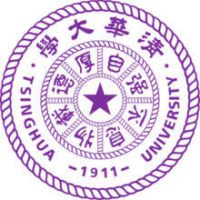
Tsinghua University
-

Peking University
-
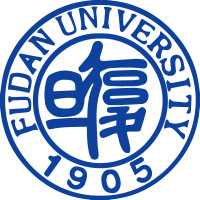
Fudan University
-

Wuhan University
-
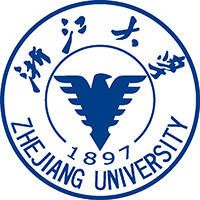
Zhejiang University
-

Nanjing University
-

Sun Yat-sen University
-

Tongji University
-

Renmin University of China
-

Jahrom University of Medical Sciences
-
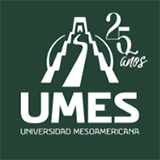
Mesoamerican University
-

Istmo University
-
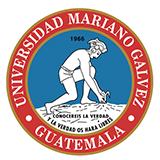
Mariano Galvez University of Guatemala
-

Regional University of Guatemala
-
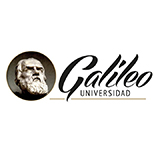
Galileo University
-
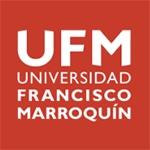
Francisco Marroquín University
-

Rafael Landívar University
-
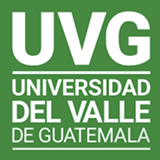
University of the Valley of Guatemala
-

University of San Carlos of Guatemala
-
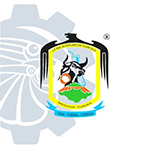
Technological Institute of Tlaxcala Plateau
-
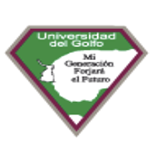
Golfo University
-
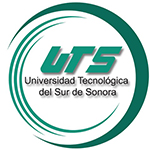
Technological University of South Sonora
-
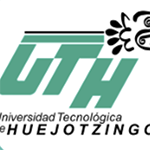
Technological University of Huejotzingo
-

Tizimín Institute of Technology
-

Chilpancingo Institute of Technology

